|
Avia B.534 Quattro Combo (Royal Class)
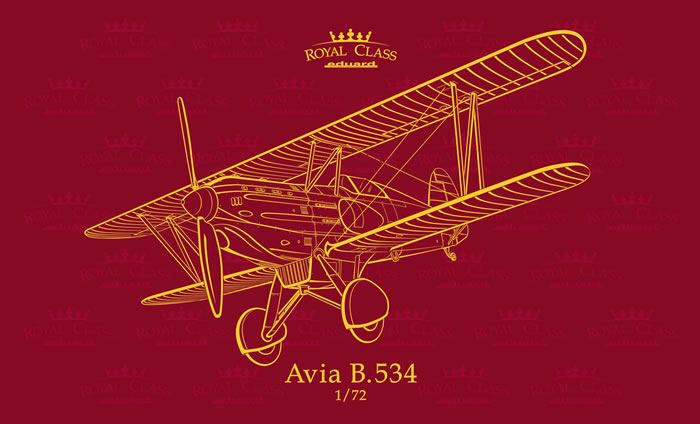
Eduard, 1/72 scale
S
u m m a r y |
| Catalogue Number: |
Eduard Kit No.R0010 – Avia B.534 Quattro Combo (Royal Class) |
| Scale: |
1/72 |
| Contents and Media: |
244 grey and 16 clear styrene parts, one coloured PE fret of 52 parts, four plain PE frets with 55 parts each, pre-cut paint mask, decals for 31 markings options, and a soft cover reference book of 64 pages. |
| Price: |
Available online from:
Click for currency conversion. |
| Review Type: |
FirstLook |
| Advantages: |
Superb quality components and decals, huge choice of markings, and nice reference booklet. |
| Disadvantages: |
One of the four kits can only be built as an unarmed version used in at a Swiss air race in 1937 and accounts for two of 31 markings options – This seems a bit of a wasted opportunity, leaving just three kits to exploit the remaining 29 options. |
| Conclusion: |
The quality of the contents is superb. In my view the plastic is as good as a Tamiya kit’s is, whilst the decals are better than those offered by this leading Japanese brand. The addition of coloured and plain PE details just helps elevate the package’s standing even further. This said, I suspect that the PE rigging will be left on the fret in many cases. I would love to be proven wrong on this point, and find Eduard have cracked how to do PE rigging, in 1/72 scale at least!
Eduard’s are clearly the best B.534 serie III & IV kits in “The One True Scale”, although I see no need to discard your HR Model and RS Models kits if you own them already, and of course these two brands continue to offer the only 1/72 B.534 serie I & II kits.
I happily recommend the Royal Class boxing to those who like this sort of package, and unconditionally recommend any single kit boxings of the B.534 Eduard should release in future (only a weekend serie IV released so far, with a serie III announced). |
Reviewed by Mark Davies

Eduard's 1/72 B.534 Weekend Edition is available online from Squadron.com
The Avia Company was a leading supplier of military aircraft to the Czechoslovak Air Force as well as various export customers. It had designed a long line of fighter types, and the B.34 that was to lead to the 534 series, first flew in 1932 using a licence-built Hispano-Suiza V-12 of 650hp. Its designer was Ing Novotny who had spent time in Britain with Hawker. This experience was put to use with construction methods that followed Hawker practice, although the chin radiator installation was somewhat ungainly compared to the sleek lines of the Hawker Fury it otherwise resembled.

The B.34 was a bit of a stopgap design, and developments with other engines, including a radial, were tested (B.134 & B.234) without being adopted for production. Meanwhile, the licence-production of the latest and more powerful Hispano Suiza 12-Ydr of 860hp meant that Avia could adopt this engine and produce a state of the art biplane fighter. It was known as the B.534 and first flew in September 1933.
Various changes were made over the life of the design, and without giving a definitive list these included some of the following:
-
A change from two fuselage and two wing guns to just two fuselage guns in the serie I because the wing guns apparently did not provide accurate enough fire (presumably due to flexing of their mounts under recoil or when pulling G). Then four fuselage guns were adopted for the serie II onwards.
-
The serie III onwards also had a single round air intake under the nose replacing the earlier series’ twin intakes.
-
The use of wheel spats on serie III & IV aircraft (but often removed in service due to clogging)
-
The serie IV’s adoption of metal propellers.
-
The second prototype’s canopy was dropped in favour of open cockpits on the early series aircraft, only for a different style of closed canopy to be readopted in the serie IV. A bubble-style canopy was also developed as a retrofit option for open cockpit series aircraft, but was rarely used.
-
All serie IV aircraft abandoned a tail-skid in favour of a tail-wheel, and this was retrofitted to some earlier series machines.
-
Serie IV machines were equipped for night flying and fitted with navigation lights.
The B.534 did not to see combat service with the Czechoslovak Air Force, but a few would serve with the First Slovak Republic that had become a puppet state of Nazi Germany following the Nazi invasion and division of Czechoslovakia. (Having already occupied the Sudetenland in 1938, Germany renamed the remaining Czech lands as the Protectorate of Bohemia & Moravia.) In fact, Germany and Bulgaria were to be the largest operators of the B.534, although a few aircraft were also acquired by a number of other countries including Greece (two bought privately and gifted to the Greek government), Croatia, Romania, Hungary and apparently the Soviet Union.
Previous 1/72 B.534 Kits
The Avia B.534 is a subject which seems to challenge Czech companies to raise their own standards, regardless of how good they may already be. This applied to all three brands I am aware of having previously released B.534 kits in “The One True Scale”.
There is the old but still credible Kovozávody Prostejov* kit from 1971 (also re-boxed under KP, Kopro, Aeroteam and Flugzeug Publikations brands), and much more recent releases from two Czech companies, HR Models and RS Models. HR Models offer several boxings of a very nice modern limited run kit with extensive PE details and vac-from clear parts. Of similar high quality, but with an injected canopy although no PE parts, is the series of kits form RS Models. Both companies covered the four main production variants and numerous markings options, and were just that bit better than their regular products in my opinion.
Frankly, I can think of only two brands that would be likely to better either of these Czech limited-run releases; these being either Tamiya or Eduard. Obviously Tamiya is an unlikely contender, whereas Eudard is an obvious choice; especially as they have already released a superb B.534 in 1/48 scale.
* The original Czechoslovakian communist-era brand which has also been branded as KP and Kopro, and re-boxed by Mastercraft. Not to be confused with the same name recently registered as a trademark by Petr Muzikant, owner of AZ Models, Admiral and Legato brands. I understand that “Kovozávody Prostejov” had never been registered, and so was “up for grabs” so to speak. Kovozávody Prostejov as owned by Petr Muzikant has begun releasing a number of good quality modern new-tool kits, and has nothing to with the original Kovozávody Prostejov toolings.
Contents
The contents come in a top-opening box that weighs in at a hefty 1kg. The sprues and decals are enclosed in resealable cellophane bags, whilst the masks and PE frets come in zip-lock polythene bags. The instructions consist of twelve glossy colour printed A4 pages, whilst the colours & markings guide is 32 pages of the same. Both feature English and Czech text, and are very appealing in appearance due to their excellent quality. (The review kit’s instructions can be viewed or downloaded as a PDF here).
There is also very well produced bound soft-cover 64-page booklet. This is full of superb period B&W photos, colour walkaround images of a Kbely Museum’s example, and attractive colour artwork. Unfortunately, all of the quite extensive text is in Czech, but it remains a still useful and appealing adjunct to the kit.
At first I assumed that the kit parts would simply consist of four complete kits, allowing in theory four of the same version to be built; but this is not the case. Half of the grey sprues are identical; but the other four have variations.
The four sprue variations all involve different styles of fuselage parts and other more minor variations, although these only cover differences within serie III & IV airframes, which are but only two of the four main variants. So for now, RS & HR Models continue to hold a partial advantage as their kits cover the serie I & II versions as well. (The serie I aircraft was quite different to the others, having an open cockpit and a fuselage featuring only one gun trough each side, along with wing gun-pods.)
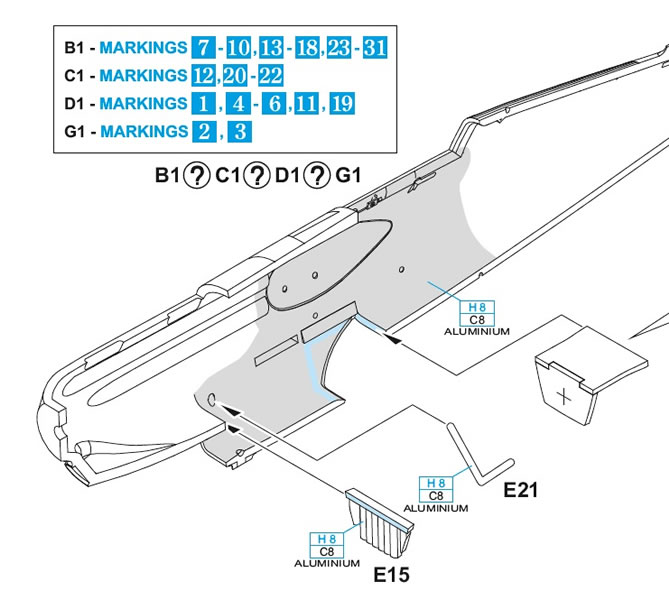
The four variations covered by the Royal Class issue are two serie III aircraft with open and “bubble” canopy, a serie IV in standard operational form, and a special 1937 Swiss race-meet version serie IV with the gun toughs and blisters faired over. Personally, I would have preferred a serie I option to one that applies to a one-off air race meeting.
There are only two complete clear sprues (the same as found in single-kit boxings), which are sufficient to complete four models since they include a variety of canopy styles on each sprue, but obviously will not allow more than two identical versions to be made.
So to reiterate, this Quattro Combo does not include four identical kits, but does indicate that different versions will be released as individual boxings in the future. So far there has only been a weekend edition of the B.534 serie IV released and Weekend Edition serie III kit announced. Note doubt Prifipac and Dual Combo editions will follow.
The Kit
Eduard’s instructions are very nicely printed and extremely clear and easy to follow. They include a handy front-on drawing illustration the correct lower wing dihedral with dimensions. Colour call-outs are cross-referenced to the Gunze Aqueous (acrylic) and Mr. Color (lacquer) paint ranges. As four variants are covered careful checking may be needed in some areas to ensure that you are following the correct assembly sequence. This mainly applies to fuselage style, propeller choice, spatted or uncovered wheels, tail-wheel or skid, canopy style or windscreen, headrest style, bombs, or underwing containers that resemble drop-tanks but must be something else as I do not think the wing was plumbed for fuel.
The moulding of the airframe parts is simply superb; very clean, crisp, with commendably narrow sprue gates and thoughtfully placed ejector pins. Transparencies are thin and clear. The detail in some areas is exquisite, and the surface detail most realistic when compared to the original aircraft. There are some very fine details moulded, as evidenced by the tyre logos and the machinegun barrel jacket perforations.
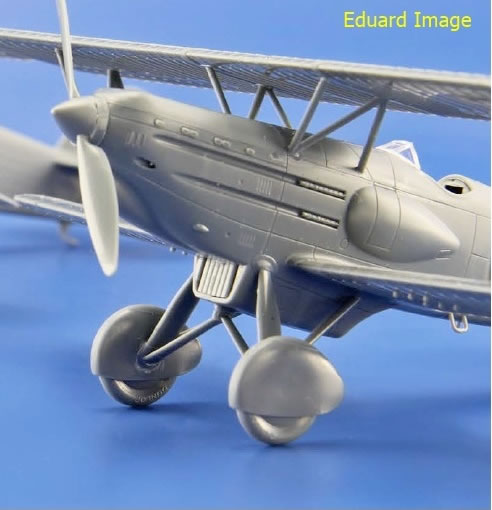
Cockpit detail is very good with what is provided by plastic alone, but of course it is greatly enhanced by Eduard’s colour PE details. Eduard is to be commended for giving three choices of instrument panel finish; raised detail painted or decaled, or coloured PE. There are also two instrument panel styles covered by these media, as the racing version’s differs from the standard service machine’s panel. However, where Eduard fails ever so slightly, is two decals for race version are provided when only one race option fuselage is supplied, leaving just two standard panel decals for the other three fuselages. This matters little, as I think most will opt for the very nice PE panels (of which four of each style are provided).
The remaining main airframe parts are conventional for a biplane kit, and include separate elevators and rudder. The fabric surface detail captures the original’s very prominent rib tapes, and includes little bumps presumably representing where the fabric is knot-stitched to the metal wing-ribs (or fixed by some other method). These almost seem to me to be the fabric-covered equivalent of rivet representation on all-metal surfaces that seems increasing fashionable with models these days. The tiny bumps may be a fraction over-scale, but I do not feel that they detract from the surface finish at all, and will be barely detectable under paint, as the Eduard-sourced image below illustrates...
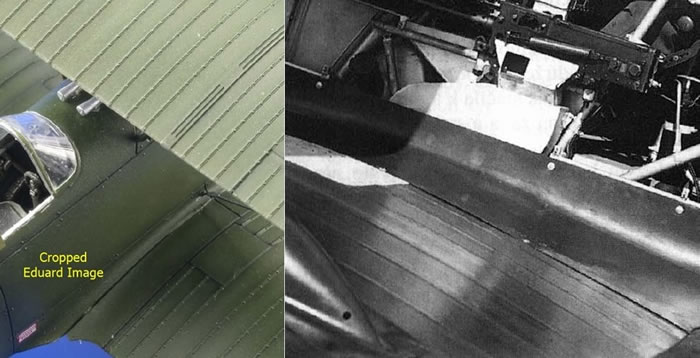
The use of PE for airframe detailing is modest, with radiator matrix and straps, oil-cooler matrix, strut-mounted pitot, and gun-sight. There is also a choice of PE or plastic boarding step. PE also provides replacement fins for the small bombs, as well as a tail-wheel guard for one Luftwaffe option (perhaps a glider tug?).
Whist the quality of the parts suggests that the kit will build very well, I can add an endorsement after reading a build article by Tim Upson-Smith in the April 2015 issue of SAMI. He wrote that Eduard’s B.534 was “the best fitting and engineered 1/72 scale kit it has ever been my pleasure to assemble”. High praise indeed, especially when you consider that the subject is a biplane!
Optional Photo-Etched Rigging
Now to the most unusual aspect of this kit; and one that is thankfully optional in my opinion.
Eduard supply PE rigging all four kits. This is predictably flat and so resembles the streamlined RAF-wire type of rigging used on the original. Of interest is the way the flying wires are fitted to the airframe, which may go some way to alleviating the curse of PE rigging; namely, the difficulty with tensioning it. Each flying and landing wire, whether single or paired, is anchored at one end by separate tensioners. These tiny PE fixings must be inserted into holes the modeller drills in accordance with the two pages of detailed rigging instructions. One end of the flying or landing wire is anchored in a hole, and the other end is fed through a slot in the fixing and bent back on itself, as shown below:
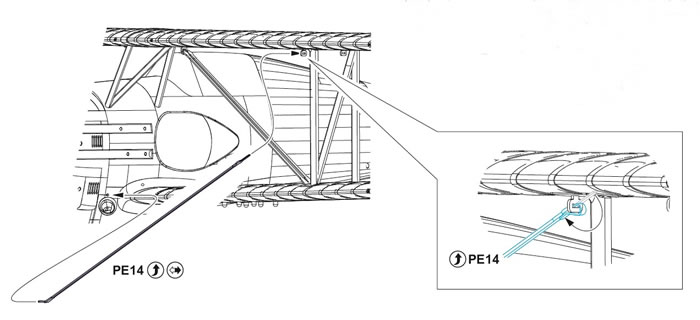
I should think that despite this somewhat innovative approach, that many will opt not use the PE rigging simply because it is so fiddly. This aside, I also remain to be convinced that it offers a superior result to other rigging methods that enable tension to be easily applied (be they elastic-thread, tensioned monofilament, stretched-sprue etc). I also feel that round-section rigging is quite acceptable in 1/72 scale, despite flattened section PE being theoretically more accurate. I leave it to reader to judge, but even in the Eduard image below of a very nicely made company model, the PE rigging it is slightly bowed in a couple of places:
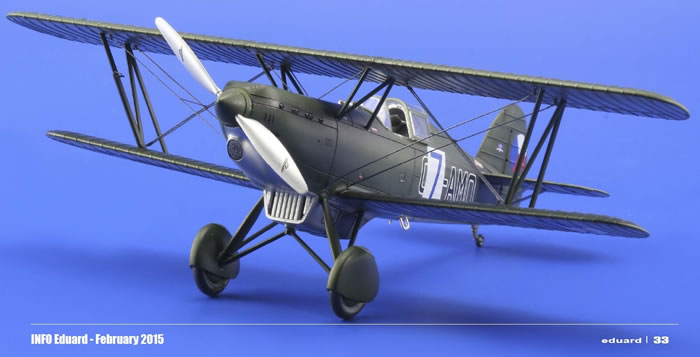
It is not my intention to nit-pick a very well made model, or to criticise Eduard for offering option of PE rigging; in fact I commend both. I just want to illustrate the challenge I think the PE option will present. But it is only guess work on my part as I have yet to try it; and it does appeal enough that I think I shall be tempted to give it a go when I build one of these delightful kits!
Decals and Colours & Markings Guide
If it were not for the fact that the kit parts equal or even surpass Tamiya standards in this scale, I would say that the decals plus their colours and & markings guide were the most impressive part of this Royal Class boxing. They certainly stand out due to the sheer number and colourfulness of the decals; not to mention their superb quality since they are printed by Cartograf. (Be careful when examining the decals, as in addition to the one large and two smaller sheets, there is a tiny errata sheet just a couple of centimetres square, and so easy to lose.)
The colours and markings guide is delight to behold, and replete with many interesting options. It also includes a clear illustration of how to paint the wooden propeller and its lamination pattern (a first in this scale perhaps?). There is also a page covering the placement of a modest quantity of stencilling.
The markings options include two race-meet options painted in the same livery and differing only in serial and race numbers. This seems a waste of choice to me, but I assume the two aircraft are of some significance to Czech modellers (after all, this boxing is I think mainly aimed at Eduard’s domestic market).
Although I have not exhaustively cross-checked the decals sheets to the guide, it would appear sufficient national insignia of all types are provided to cover the 31 markings options in full. As such, it will provide a very useful addition to your decal bank even after building four models. The options provided are all in Czech and too lengthy to list within this review, but can be viewed by clicking here and scrolling down the linked webpage where you will need to click on “view full description” under markings options.
Six different finished versions can be viewed by clicking here and scrolling down the linked webpage, along with multiple images of various models featured in Info Eduard, February 2015; and downloadable as PDF here.
Painting is made easier by the inclusion of a single-sheet pre-cut Kabuki tape mask. This provides masks for the various canopy and windscreen options, and wheels. Thre are also masks for the wrap-around of upper surface colour on the underside of the tailplane and wing tips of the Czechoslovak options with two-colour camouflage (the modeller must use masking-tape for the remainder of the wing leading and trailing edges in these cases). The sheet provides sufficient masks for a single example for each masking task.
Reference Booklet
This boxing includes a good quality publication titled Petistovka (which I believe translates as Five Hundred) by Jiri Vrany, Igor Mrkvanek and Jaroslav Krec. I cannot explain the title, and wonder if Google Translate let me down! The book is in Czech with no English or other language captions, but the photos and colour schemes still compliment the kits very well. It would be nice to have and English version to be able to read the extra background notes on the aircraft covered (or nicer still to be able to speak and read Czech!).
Info Eduard (Eduard’s on-line magazine) of February 2015 included an excerpt from Petistvoka translated into English, and this can be downloaded as a PDF using this link. I have included an image of the open booklet below:
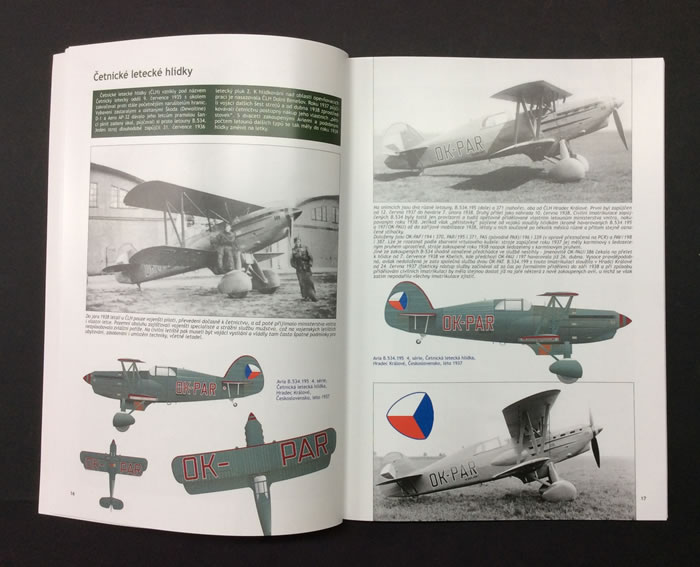
Eduard’s Royal Class Avia B.534 is I think pretty much aimed at the Czech domestic market, where there will be plenty of B.534 fans happy to build several variants. It also had a sort of “deluxe” appeal that may snare collectors. Certainly, the quality of the instructions and colours and markings guide makes for a most appealing package when combined with the range of markings options. The reference booklet with its Czech text is a very nice touch too, but an English version would be even nicer.
I remain puzzled by one of the four kit options being restricted to an unarmed racer with covered by two decal options with identical liveries out of the 31 schemes provided for. I would have thought a serie I fuselage would make for a far more interesting option, but perhaps the race version has a special place in Czech hearts.
The price of the Quattro Combo is roughly what you could expect to pay for four single Profipack boxings, with the added benefit of the reference book. As such it might also appeal as a group buy, provided somebody is happy to build the race version.
The quality of the contents is superb. In my view the plastic is as good as a Tamiya kit’s is, whilst the decals are better than those offered by this leading Japanese brand. The addition of coloured and plain PE details just helps elevate the package’s standing even further. This said, I suspect that the PE rigging will be left on the fret in many cases. I would love to be proven wrong on this point, and find Eduard have cracked how to do PE rigging, in 1/72 scale at least!
Eduard’s are clearly the best B.534 serie III & IV kits in “The One True Scale”, although I see no compelling need to discard your HR Model and RS Models kits if you own them already; and of course these two brands continue to offer the only B.534 serie I & II kits.
I happily recommend the Royal Class boxing to those who like this sort of package, and unconditionally recommend any single kit boxings of the B.534 Eduard should release in future (only a weekend serie IV released so far, with a serie III announced).
Thanks to Eduard for the sample
Review Text Copyright © 2015 by Mark Davies
Page Created 24 June, 2015
Last updated
25 June, 2015
Back to HyperScale Main Page
Back to Reviews Page |
